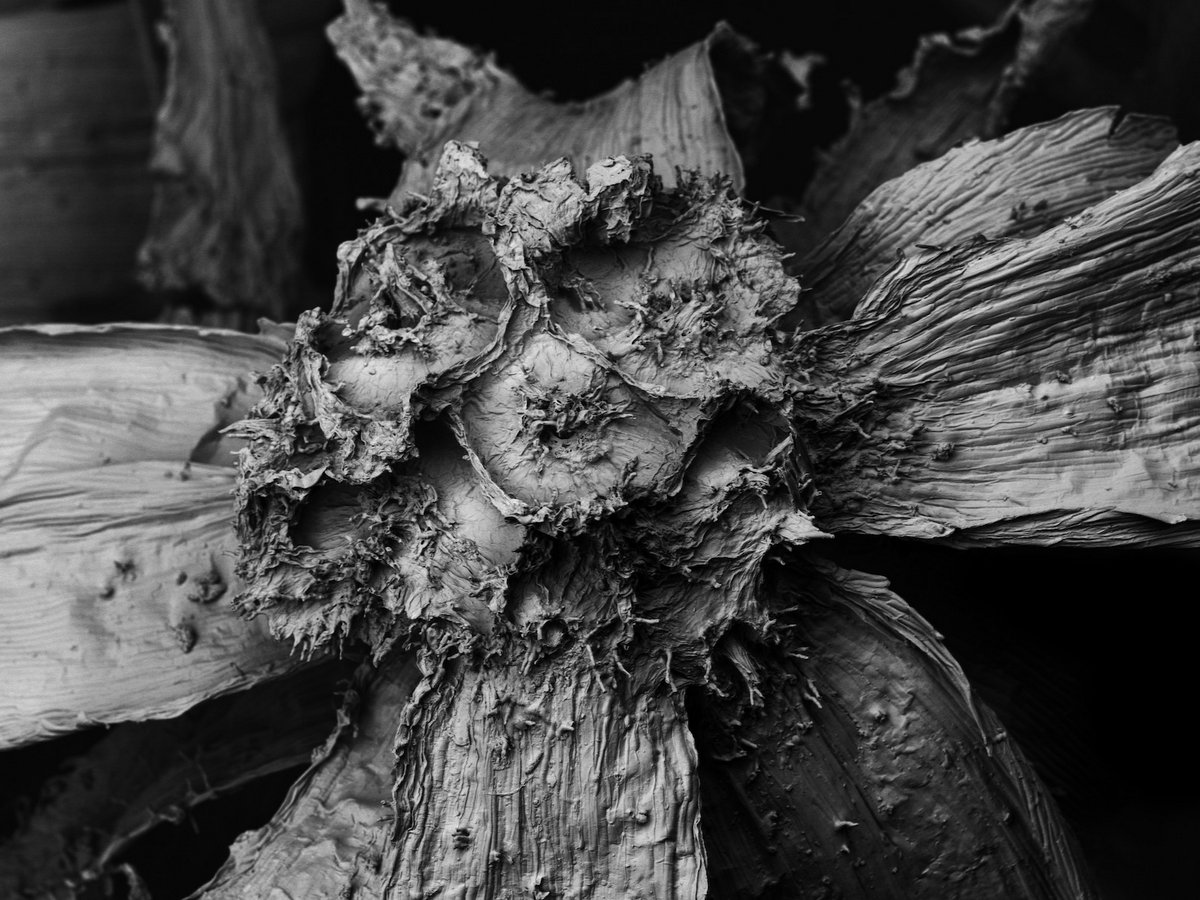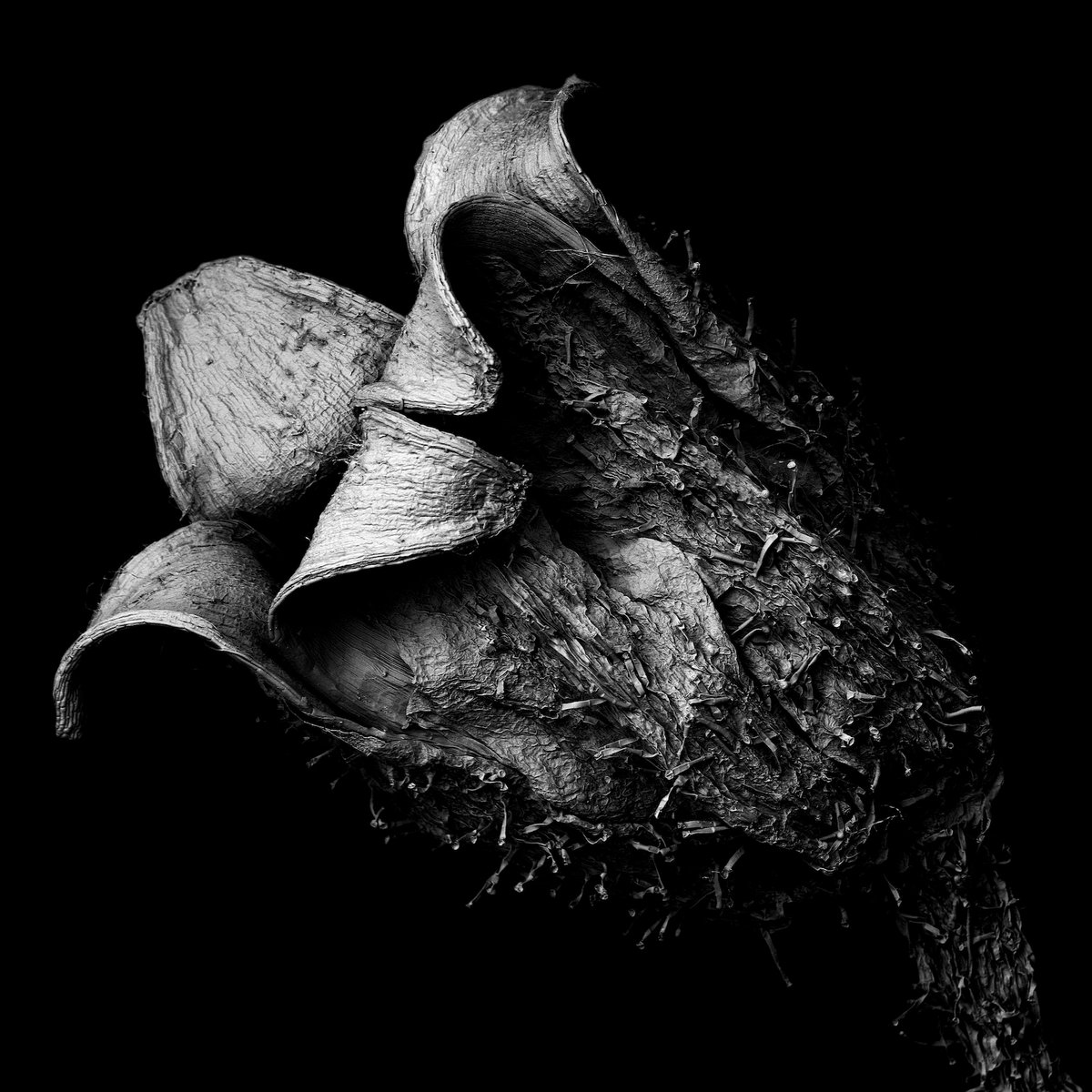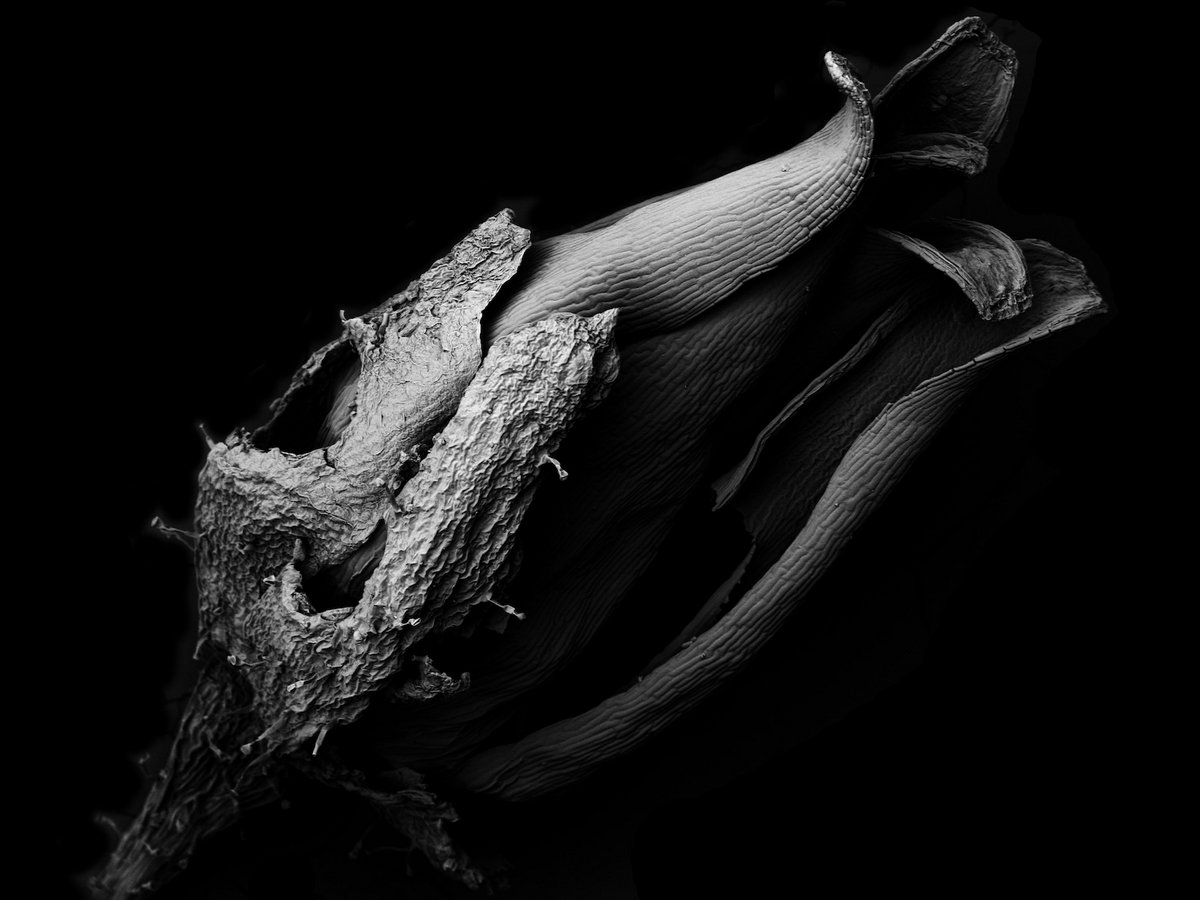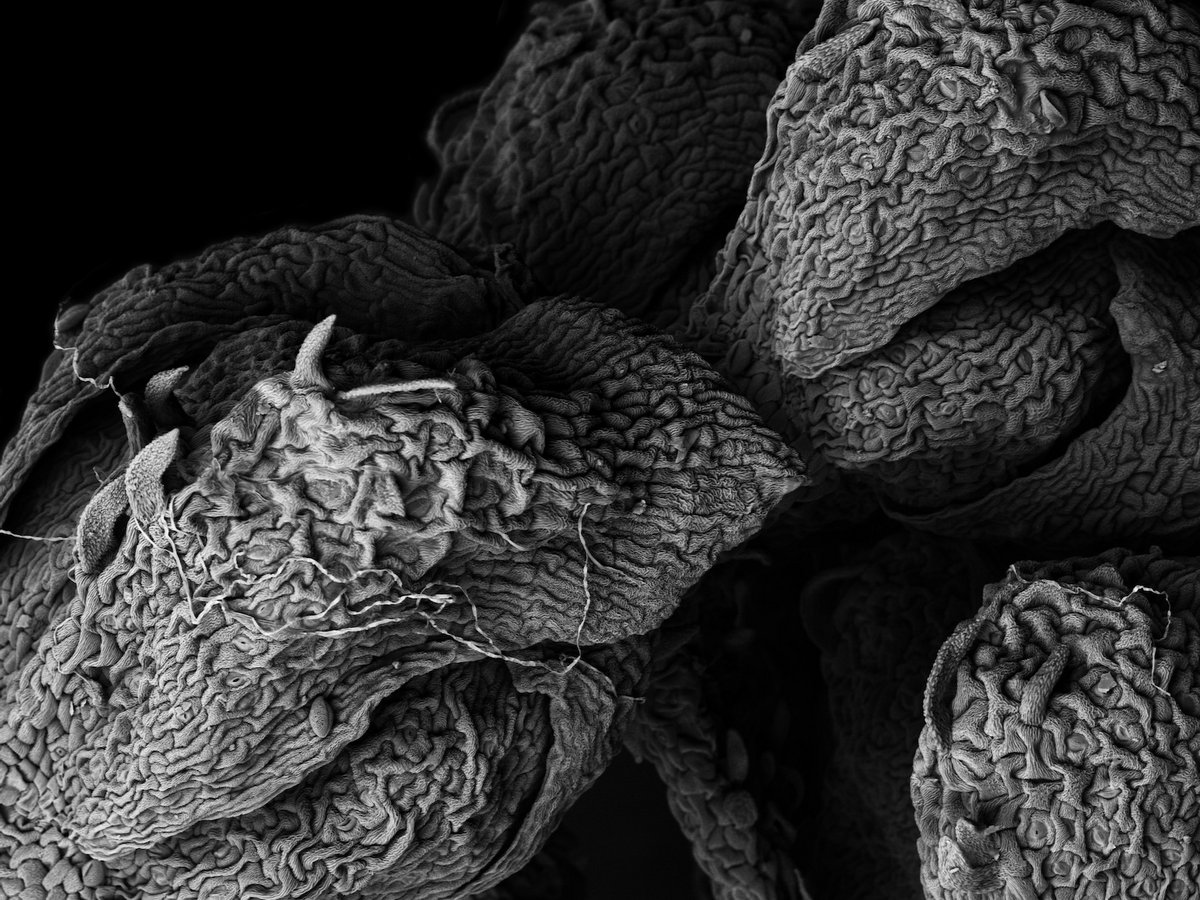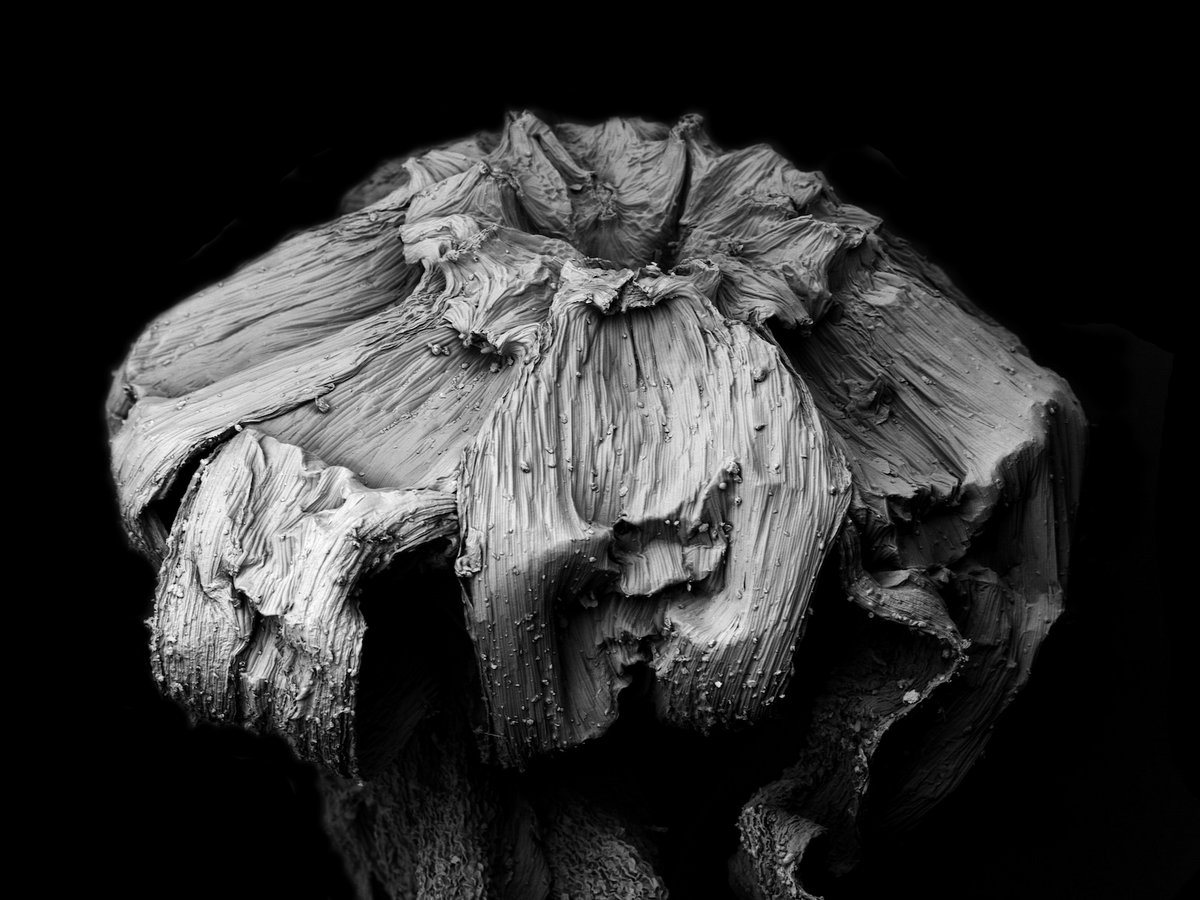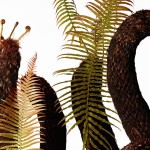
photos courtesy the artist | click to enlarge
Under a microscope, even the most common objects can look like terrifyingly new worlds. But in artist Tomoya Matsuura’s new series titled Withered Plants, he focuses his microscopic lens on dying, decaying plants. The subjects are often individual parts of flowers – petals, filaments, anthers and stigma – that in real life measure between 1 mm and 5 millimeters. That’s around the size of the tip of a pencil.
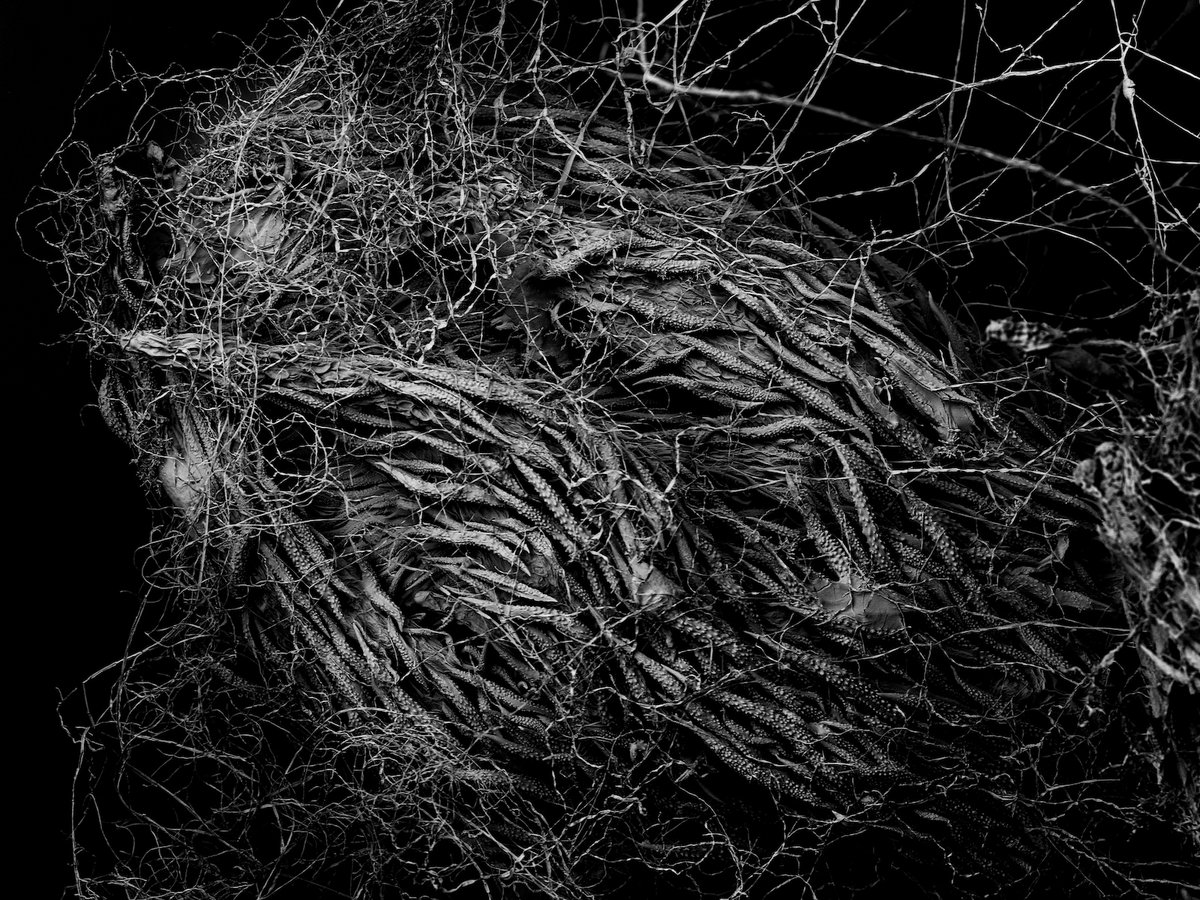
“It may be an ancient Japanese concept of nature, but my underlying idea is that people and nature are one. All things exist connected to everything else.”
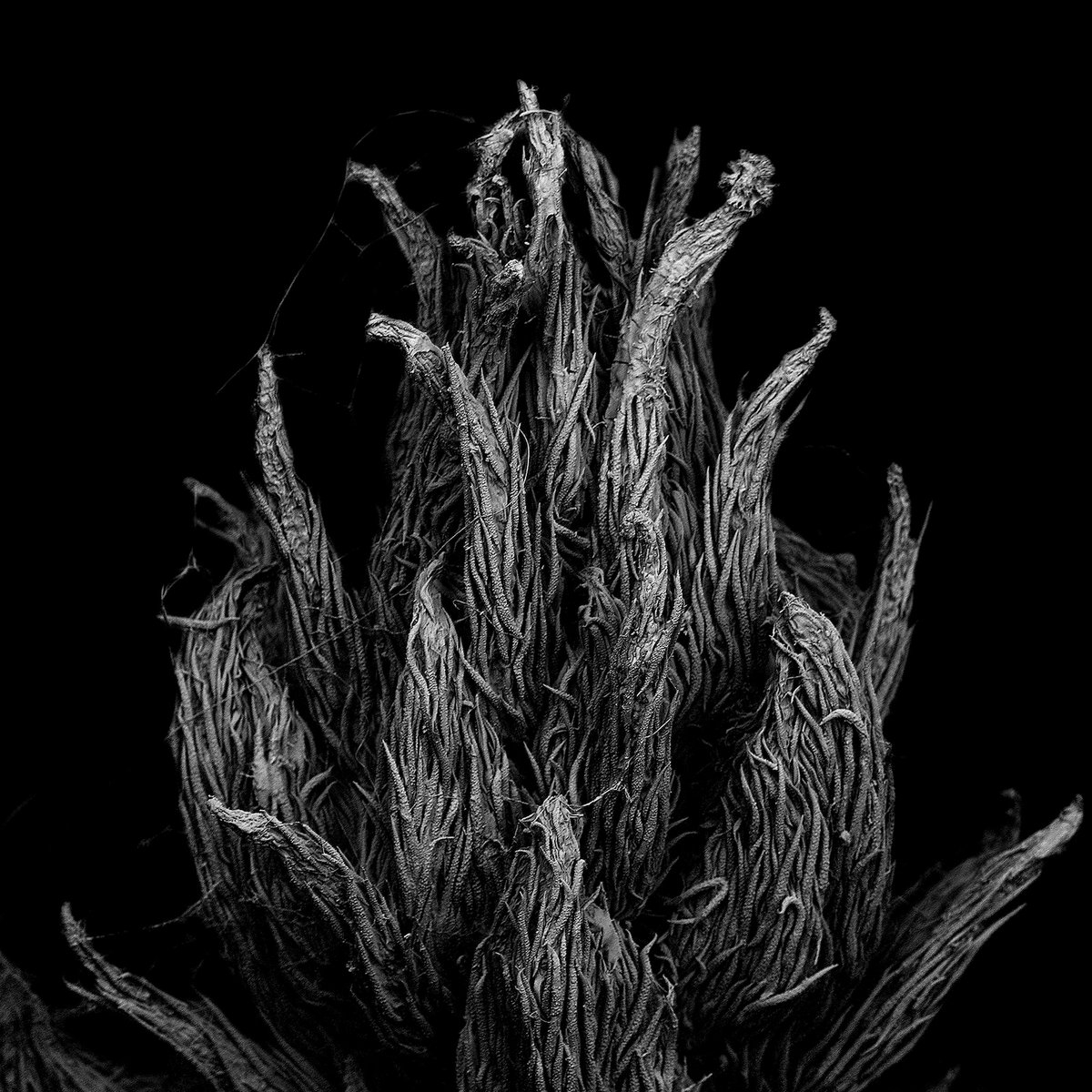
Matsuura uses what’s known as a SEM, a Scanning Electron Microscope. It’s become one of the most powerful scientific visualization tools because of its ability, on an atomic level, to capture incredible close-up details of almost anything. In fact, exactly 75 years ago this month the first electron microscope was demonstrated in the U.S. so it’s quite timely that we’re taking a look at Matsuura’s work.
“It may be an ancient Japanese concept of nature, but my underlying idea is that people and nature are one,” says the artist. “All things exist connected to everything else.” Matsuura, who is a music composer as well as a photographer, wanted to show the cycle of life.
Although we often stop paying attention once a plant dies, it in fact continues to display a host of expressions and motions. “This cycle exists in all things. This piece is based on the idea that human beings are but one part of nature.”

